
Sofonisba Anguissola stands as a towering figure in the history of Western art, celebrated not only for her exceptional talent as a painter but also for her remarkable achievement in forging a successful international career during the Italian Renaissance, a period when professional opportunities for women artists were severely limited. Born into nobility yet breaking societal molds, Anguissola's life and work offer a compelling narrative of artistic dedication, skillful self-presentation, and enduring influence. Her mastery of portraiture, particularly her insightful depictions of individuals and family life, earned her contemporary acclaim from fellow artists and prestigious patrons, including the Spanish royal court.
Early Life and Artistic Education in Cremona
Sofonisba Anguissola was born around 1532 in Cremona, a city in Lombardy, Northern Italy. She was the eldest of seven children—six daughters and one son—born to Amilcare Anguissola and Bianca Ponzoni, both from noble families of lesser means. Unconventionally for the time, Amilcare, a humanist scholar, believed in providing his daughters with a well-rounded education that extended beyond the typical domestic skills expected of aristocratic women. This included instruction in literature, music (Sofonisba was an accomplished musician), Latin, and, most significantly, painting.
Recognizing Sofonisba's burgeoning talent, Amilcare arranged for her and her sister Elena (who later became a nun) to receive formal artistic training. Around the age of fourteen or fifteen, circa 1546, they began studying with Bernardino Campi, a respected local painter and portraitist in Cremona. This apprenticeship model was highly unusual for young women, who were typically excluded from the workshop system that formed the backbone of artistic training for men. After Campi moved from Cremona, Sofonisba continued her studies around 1549 with Bernardino Gatti, another prominent painter known locally as "Il Sojaro," who had himself been a pupil of the great High Renaissance master Correggio.
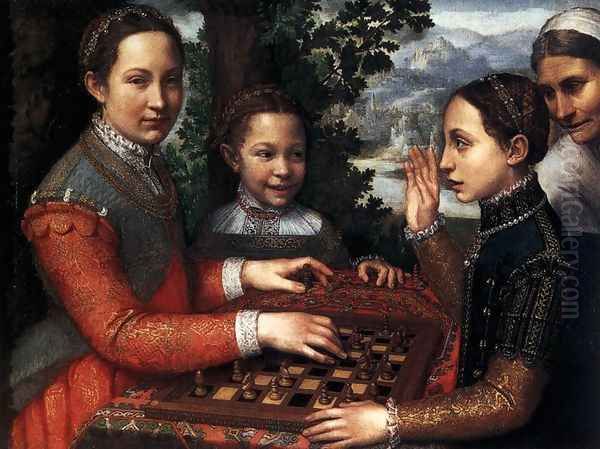
Under Gatti, Anguissola likely refined her technique, absorbing influences from the soft modeling (sfumato) and gentle naturalism associated with Correggio and the elegant Mannerism of Parmigianino, whose styles were influential in the region. Her education was comprehensive, allowing her to develop a sophisticated understanding of art theory and practice. This rigorous training, supported by her father's ambition and connections, laid the foundation for her future success and set her apart from most women of her era. Her sisters Lucia, Europa, and Anna Maria also became painters, though none achieved Sofonisba's level of fame, while Minerva became a writer and scholar.
Developing a Distinctive Style: Early Works and Self-Portraits
From the outset of her career, Anguissola demonstrated a remarkable aptitude for portraiture, which became her primary genre. Constrained by social conventions that limited women's access to anatomical studies (necessary for large-scale history or religious paintings) and public commissions, she turned her focus inward, frequently depicting herself and her family members. This focus, however, proved to be a source of innovation rather than limitation. Her early works are characterized by a sensitive naturalism, an intimate portrayal of domestic life, and a keen psychological insight that was distinctive within Lombard art.
Anguissola produced an unusually large number of self-portraits throughout her career, at least twelve of which survive. These works were not mere exercises in likeness but sophisticated tools for self-fashioning and professional promotion. In an era when female artists were novelties, her self-portraits asserted her identity as a skilled professional, often depicting herself engaged in the act of painting or playing a musical instrument (like the spinet or clavichord), thereby highlighting her artistic talents and virtuous, cultured upbringing. A notable early example is the Self-Portrait at the Easel (c. 1556), where she presents herself confidently at work, directly engaging the viewer.
One of her most celebrated early masterpieces is The Chess Game (1555). This painting depicts three of her sisters (Lucia, Minerva, and Europa) engaged in a game of chess, observed by a servant woman. The composition is lively and informal, capturing a moment of familial interaction with remarkable spontaneity and psychological depth. It subtly challenges traditional gender roles by portraying young women engaged in an intellectual pursuit, showcasing their intelligence and composure. The detailed rendering of expressions, clothing, and the intricate chessboard demonstrates her technical prowess and observational skills. This work, along with others depicting her family, helped establish her reputation for capturing intimate, lifelike scenes.
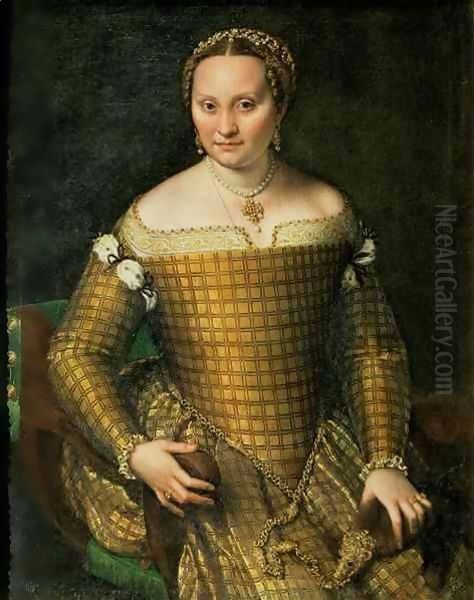
Another fascinating early work is Bernardo Campi Painting Sofonisba Anguissola (c. 1559). In a clever reversal of traditional roles, Anguissola depicts her former teacher painting her portrait. While seemingly showing deference, the painting subtly elevates her status – she is both the subject of the master's attention and the true creator of the artwork the viewer beholds. This complex interplay between artist, model, and creator showcases her intellectual engagement with the nature of art itself.
Recognition, Rome, and Michelangelo's Esteem
Anguissola's talent did not go unnoticed. Her father actively promoted her work, sending examples to prominent figures. Around 1554, she traveled to Rome, where she had the opportunity to meet other artists and intellectuals. It was during this period, or shortly thereafter through correspondence facilitated by her father, that she came to the attention of Michelangelo Buonarroti, arguably the most revered artist of the age.
According to accounts, including that of the influential art historian Giorgio Vasari, Amilcare sent Michelangelo a drawing by Sofonisba depicting one of her sisters smiling. Michelangelo, impressed, reportedly requested a drawing of a contrasting subject – a crying boy – to test her skill further. In response, Sofonisba sent him a drawing titled Boy Bitten by a Crayfish (featuring her younger brother Asdrubale), which depicted the boy's tearful reaction with striking realism and a touch of humor. Michelangelo was said to have been highly impressed by her ability to capture human emotion.
Michelangelo's recognition was invaluable. While not a formal apprenticeship, his guidance and praise significantly boosted her reputation. Giorgio Vasari himself included Anguissola in the second edition of his Lives of the Most Excellent Painters, Sculptors, and Architects (1568), praising her diligence and skill, particularly in drawing and portraiture. This inclusion was exceptional for a living female artist and cemented her status within the Italian art world. Her growing fame soon reached beyond Italy.
The Spanish Court: An Unprecedented Achievement
Anguissola's burgeoning reputation culminated in a prestigious invitation in 1559. Recommended by the Duke of Alba, she was invited to the Spanish court in Madrid by King Philip II. She was appointed as a lady-in-waiting to the king's third wife, the young Queen Elisabeth of Valois, who was herself an amateur painter. Anguissola's role was multifaceted: she served as a companion and confidante to the queen, taught her painting, and, crucially, worked as an official court painter.

This appointment was extraordinary. Anguissola became one of the first, and certainly one of the most successful, female artists to work for a major European court. For approximately fourteen years, she thrived in the formal, sophisticated environment of the Spanish Habsburg court. Her primary duty was to create portraits of the royal family, capturing their likenesses with the meticulous detail and regal bearing demanded by court protocol.
During her time in Madrid, she painted numerous portraits of King Philip II, Queen Elisabeth (until the Queen's untimely death in 1568), the Infantas Isabella Clara Eugenia and Catherine Michelle, and other members of the court circle. Notable works from this period include the Portrait of Queen Elisabeth of Valois Holding a Portrait of Philip II (c. 1561-65), which showcases her skill in rendering luxurious fabrics, intricate jewelry, and the reserved dignity characteristic of Spanish royal portraiture. Her style adapted to the demands of the court, becoming more formal and detailed, aligning with the work of other prominent court painters like Alonso Sánchez Coello, yet retaining her characteristic sensitivity to the sitter's personality. Titian, though not permanently resident, was the dominant influence on Spanish royal portraiture, and Anguissola worked within this established tradition while maintaining her unique touch.
Her position at court brought her considerable respect, financial security, and international renown. She was highly esteemed by the royal family, developing a close relationship with Queen Elisabeth. Her success demonstrated that a woman could achieve the highest levels of artistic patronage and professional recognition.
Marriages, Independence, and Continued Artistic Production
After Queen Elisabeth's death, King Philip II took a keen interest in Anguissola's future. In 1571, he arranged her marriage to Don Fabrizio Moncada de Paternò, a Sicilian nobleman and the Viceroy of Paternò, Sicily. Philip provided her with a generous royal dowry. Anguissola moved with her husband to Sicily, effectively ending her direct service at the Spanish court, though she maintained connections and continued to receive a royal pension.
Tragically, Don Fabrizio died just a few years later, possibly in 1573 or 1574. As a wealthy widow, Anguissola decided to return to her family in Cremona or perhaps Genoa. During the sea voyage around 1579, she met Orazio Lomellino, the ship's captain, who came from a prominent Genoese noble family involved in maritime trade. Despite being younger than her and the disapproval of her brother Asdrubale, Sofonisba married Orazio, likely drawn by mutual affection and the prospect of companionship.
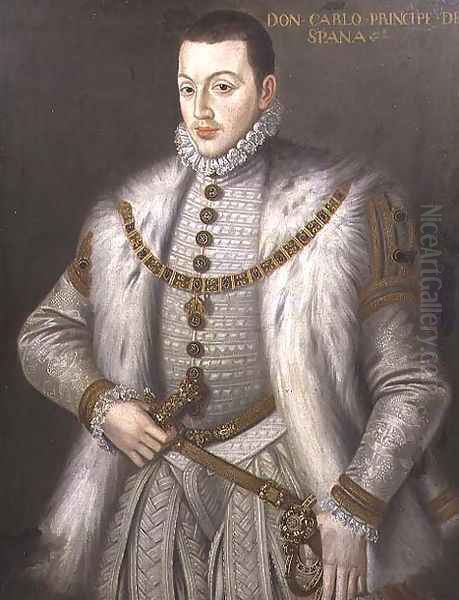
This second marriage appears to have been a happy one. They settled initially in Genoa, a thriving maritime republic. Here, Anguissola, financially independent thanks to her royal pension and her husband's wealth, established a successful painting studio. She continued to receive commissions, primarily for portraits, from Genoese nobility and other distinguished clients. Her home became a center for artistic and intellectual life, visited by local and traveling artists.
Later Life in Palermo, Van Dyck's Visit, and Final Years
Later in their marriage, Sofonisba and Orazio moved to Palermo, Sicily, where his business interests likely took them. She spent a significant portion of her later life in Palermo, continuing to paint and maintain her status as a respected artistic figure, even as her eyesight began to fail in her advanced years.
One of the most famous encounters of her later life occurred in Palermo in July 1624, just a year before her death. The young Flemish painter Anthony van Dyck, already a rising star who would become a leading court painter himself, visited the elderly Anguissola. Van Dyck recorded the meeting in his Italian sketchbook, sketching a portrait of the venerable artist, who was then around 92 years old. He noted her sharp mind and willingness to discuss painting, remarking that although her sight was dimmed, she offered him valuable advice, particularly concerning the placement of light in portraiture.
Van Dyck's respectful account and portrait sketch testify to Anguissola's enduring reputation and the esteem in which she was held by subsequent generations of artists. This meeting represents a poignant link between a pioneering female artist of the High Renaissance/Mannerist period and a leading master of the Baroque era.
Sofonisba Anguissola died in Palermo in November 1625, at the remarkable age of approximately 93. She was buried with honors in the Church of San Giorgio dei Genovesi in Palermo, the church of the Genoese community there. Her husband Orazio later placed an inscription on her tomb celebrating her life, her artistic achievements, and her renown.
Artistic Style, Techniques, and Themes
Sofonisba Anguissola's artistic style evolved throughout her long career but consistently displayed certain core characteristics. Her early work is deeply rooted in the Lombard tradition of naturalism, emphasizing realistic detail and psychological insight. She excelled at capturing the subtle nuances of human expression and personality, particularly evident in her intimate portraits of family members. Her use of warm colors and relatively soft lighting, possibly influenced by Correggio and the Venetian school, contributed to the lifelike quality and emotional resonance of these works.
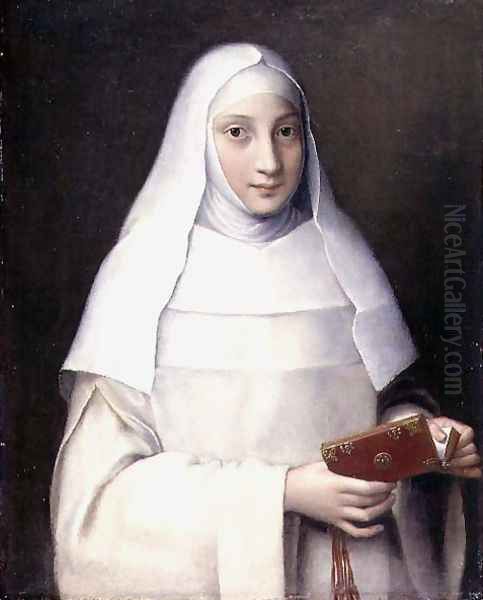
Her numerous self-portraits are a defining feature of her oeuvre. They showcase her technical skill and serve as sophisticated statements about her identity as a virtuous, educated, and professional female artist. Works like Self-Portrait at the Spinet (c. 1561) combine her artistic and musical talents, presenting an image of cultured refinement. The inclusion of symbolic elements, like an inscription or a specific setting, often adds layers of meaning related to her status and aspirations.
During her time at the Spanish court, her style adapted to the more rigid and formal demands of Habsburg portraiture. These works emphasize meticulous detail in clothing and jewels, conveying the sitter's status and authority. While adhering to court conventions exemplified by artists like Alonso Sánchez Coello and influenced by Titian's models, Anguissola often managed to infuse these formal portraits with a degree of warmth and psychological presence that distinguished her work. Painters like Juan Pantoja de la Cruz would continue this tradition after Coello.
Later in her career, particularly after returning to Italy, her style sometimes showed influences from Genoese and possibly Bolognese painting. She also undertook some religious commissions, although portraiture remained her primary focus. Works like the Madonna Nursing the Child (or Madonna Lactans) from her later period demonstrate her continued engagement with varied themes, executed with the sensitivity to light and emotion that characterized her best work. Despite failing eyesight in her final years, her intellectual engagement with art remained sharp, as evidenced by her conversation with Van Dyck.
Legacy and Enduring Influence
Sofonisba Anguissola's legacy is multifaceted and profound. In her own lifetime, she achieved unprecedented success for a female artist, gaining international recognition and prestigious court patronage. She demonstrated that women could overcome significant social and institutional barriers to pursue professional careers in the arts. Her life served as an inspiration for subsequent generations of women artists, including notable figures like Lavinia Fontana of Bologna, who became the first woman known to manage a large workshop and paint public altarpieces, and Fede Galizia, another Lombard painter known for her still lifes and portraits.
Anguissola's focus on intimate portraiture and domestic scenes, particularly her insightful self-portraits, contributed to the development of these genres. Her realistic style, rooted in Lombard naturalism, may also have been part of the broader artistic current that influenced the revolutionary realism of Caravaggio, another Lombard artist who emerged shortly after her peak. Her interaction with major figures like Michelangelo and Van Dyck underscores her respected position within the artistic landscape of her time.
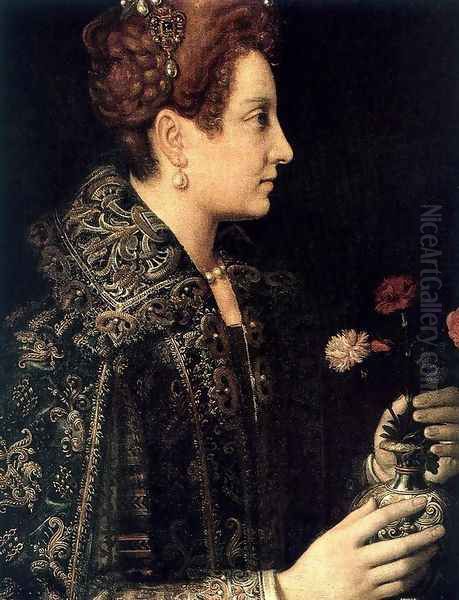
Despite her fame during her life, Anguissola's reputation, like that of many female artists, faded significantly after the 17th century. Her works were sometimes misattributed to male artists like Titian or Leonardo da Vinci. However, beginning in the 20th century, particularly with the rise of feminist art history, scholars began to rediscover and re-evaluate her contributions. Extensive research has restored her identity, cataloged her works, and highlighted her importance. Major exhibitions, including a significant show pairing her with Lavinia Fontana at the Museo Nacional del Prado in Madrid (2019-2020), have brought her art to a wider contemporary audience.
Today, Sofonisba Anguissola is recognized as a pivotal figure in Renaissance art history. She was not only a highly skilled painter but also a cultural phenomenon who challenged expectations and paved the way for women in the arts. Her compelling life story and her sensitive, insightful portraits continue to captivate viewers and scholars alike, securing her place as a true pioneer and a master of her craft.